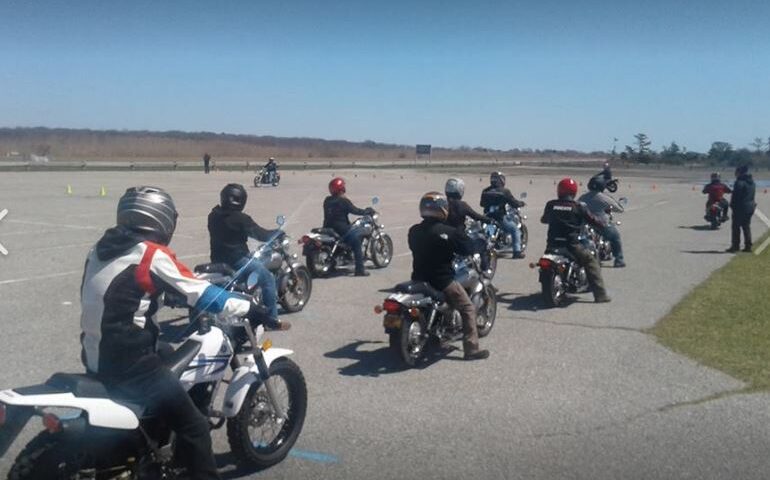Lights, camera, action!?
By George Tranos
| Lights are a bright idea! Really – motorcycle lights can help you see and help others see you better. There was a time not too long ago (in my lifetime anyway) when the operator had a switch that turned their lights on and off on their motorcycle. Today, all motorcycles come equipped with headlights and taillights that come on and stay on when the motorcycle is started. Automobiles also come equipped with this feature leaving less choice and thought required by their drivers. This has some significant advantages and some drawbacks as well. Let’s examine them in more detail.
It just makes sense that the more light you put on the pavement, the easier it is for you to see the road and any obstructions or hazards ahead. Adding a pair of driving lights provides that added light but also makes it easier for oncoming drivers to realize you are a motorcycle and not a one-eyed car. Riding with headlights on during the daytime makes you more noticeable to other drivers. A single headlight, though, appears to the oncoming driver as a narrow profile vehicle and is not as visible as a triangle of lights. Driving lights create that triangle and gives you a larger apparent image allowing others to recognize your presence and speed. |
 |
| Crash statistics prove that drivers just don’t see motorcycles or see them too late to avoid a crash. The typical car / motorcycle collision occurs at intersections with the car driver turning left across the path of the motorcycle, violating its right of way. Most drivers in these instances say that they never saw the motorcycle. Because of its narrow profile, drivers are sometimes fooled by how quickly the motorcycle is approaching. Many drivers aren’t used to seeing motorcycles as they are such a small percentage of the mix of vehicles on the road. Anything a rider can do to make themselves more visible will increase the likelihood of being seen. Besides adding driving lights, riders can wear brightly colored clothing or helmet or use an oscillating headlight. |
 |
| Automatic systems are becoming more prevalent on all types of vehicles. In addition to automatic headlights that come on when they sense low-light conditions, automatic high beams are become more commonplace as well. Also known as automatic high beam control, this system uses sensors and cameras to detect when to turn off the vehicle’s high beams. High beams should only be used when no other vehicles are around or they could blind other drivers. The advantage of this system is that the driver doesn’t have to constantly switch the lights on and off by monitoring the roadway. Automating it allows the vehicle to sense when it’s okay to keep the high beams on.
The problem with all these automated systems is that it removes the driver from the equation. The driver no longer has to concern themselves with being aware of what they should be doing and instead rely on the vehicle to make decisions for them. This is leading to a new generation of brain-dead drivers who are ensconced in their virtual cocoon. They no longer look in their blind spot, behind them or even ahead, instead relying on cameras, radar and sensors to look for them and alert them of danger. The vehicle can keep them in their lane (with lane departure warning), maintain a supposed safe distance from the car in front of them (with automatic speed control) and even stop without them touching the brakes (with automated braking). Automatic high beams have cars driving with their brights on constantly with their drivers unaware that they are blinding oncoming vehicles. Flashing your brights at these inattentive drivers just elicits blank stares. Worse yet, you see people driving at night without lights on, oblivious to their stealth. Are drivers today completely unaware of their actions or inaction? It sure seems that way. Motorcyclists have to be hyper aware that many automobile drivers are so reliant on their automated systems that they have forgotten the simple basics of the driving task – pay attention, be aware of your surrounding and be courteous to others. If you are a motorcycle rider, please give some consideration to what your vehicle looks like from the front or the rear at night. Think about what you can do to make yourself more visible. Where can you add lights to help others see you better? Would this help you reduce the risk of driving? Figuring out how to make you more visible can be illuminating. Adding lights, bright clothes and retro-reflective gear is a bright idea. |




